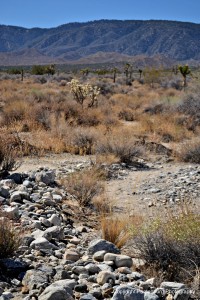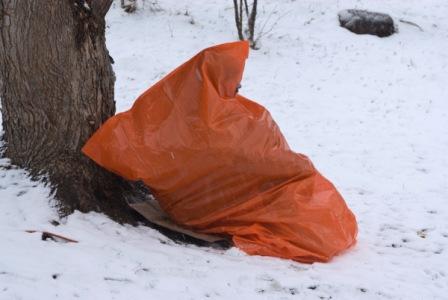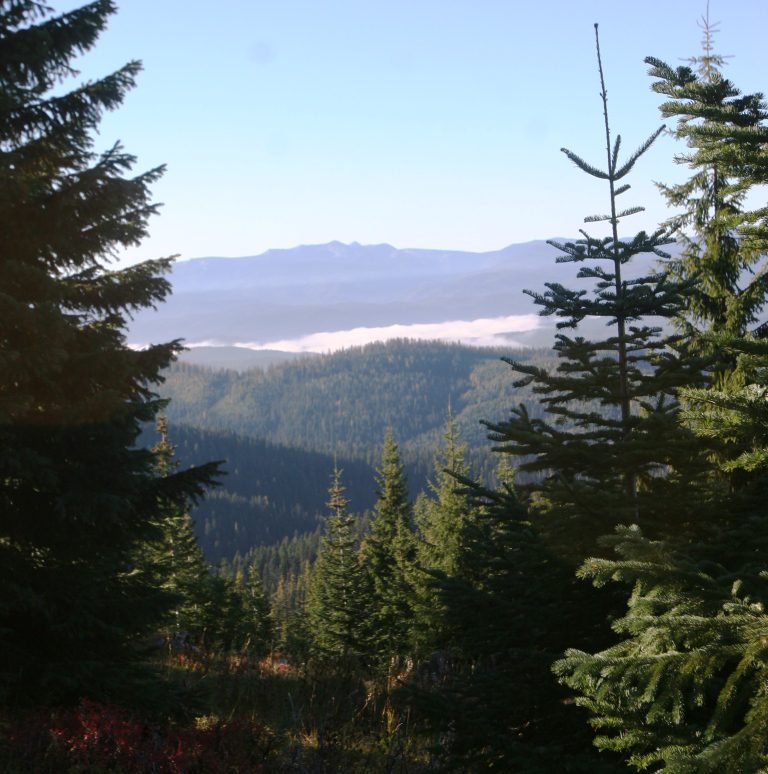It sounds counter-intuitive, or maybe like an oxymoron but walking in the rain can be a lot of fun.
Here’s how you can learn to love it. Or at least not dislike it. Too much. Regardless, if you go outside much rain will happen, so you might as well make the best of it.
by Leon Pantenburg

Me, Unitas Mountains, Utah, 1978. “Oh, the car can’t be that far away, and it probably won’t rain that hard…”
If you adopt the proper attitude, a little rain in the forecast is no big deal. Put it in perspective – all that greenery, the trees and flowers, wouldn’t be there without a lot of rain. In the arid deserts, there is little rain, and subsequently, not much flora.
Bottom line: If you go outdoors much, you will get rained on. Prepare for it, and the precipitation won’t ruin the trip. In fact, it may add to the outdoor experience.
I speak from experience as a foul weather magnet. When I hiked the John Muir Trail in the California Sierras, it rained off and on for nine days and nights. In Death Valley, CA, with an annual rainfall of less than two inches, we had to move our camp in the middle of the night because of flash flood danger. On my 1980 Source-to-Sea canoe voyage of the Mississippi River, it rained continually during the final month of November. At one point in Louisiana, it rained constantly for some 40 hours straight.
Nowadays, I hike at least a mile or two, every day, rain or shine on hot or cold days. My office supervisor, a black Lab named Naga, makes sure of that.
Proper preparation is paramount to a comfortable time outdoors. Here are some basics to help you deal with the rain.
All outdoor trips should start with the Ten Essentials.
Then, decide on your rain gear: Poncho or rain suit? Both have their place. I like a rain suit for hunting, fishing and canoeing. A poncho may be the best choice for backpacking. Here is how to decide which is going to work best for you.
Your clothing is your first line of defense against hypothermia. If rain is in the forecast, assess your clothing before you head out. Some things to keep in mind:
- No cotton. This is key. Cotton holds water, including your sweat, and chills you. Go with wicking materials like wool, nylon or polyester clothing instead. Cotton underwear is not OK. Evaluate the fabrics in your clothing before heading out.
- Go with synthetic insulation in your jacket. Down loses most of its insulating ability if it gets wet, and it is virtually impossible to dry it out outdoors. Wool is always a good choice. Water-resistant down and hybrids that combine synthetic insulation and water-resistant down are your next best bet. If you’re hiking in milder weather, a lightweight fleece or soft-shell jacket are good choices.
- Invest in quality rainwear. Your raingear can make or break your outing. I’ve had great luck with Beretta and Tru Spec rain jackets and suits. My rain gear tends to be camo or subdued colors, since I also use them for hunting. But bright colors can help cheer you up on a gloomy, grey day and help search and rescue teams locate you.
- Pack a rain cap. Your rain jacket should have a brimmed hood, but it will do a poor job of keeping rain off your face or glasses. A rain hat should have a broad brim. A ballcap-style hat is fine if you’re okay with water running down your neck and soaking your shirt collar. You can, however, wear it under the rain jacket hood.

The day was hot, but the broad-brimmed hat protects from both sun and rain.
- Appropriate footwear. Waterproof boots and shoes may keep your feet drier initially, making them an option for colder conditions. But the moisture barrier boot liners, in my experience, can’t remove moisture fast enough from your feet sweating. The result is soggy socks, which lead to cold feet and blisters. Mesh footwear works well in warmer environments, as mesh drains and dries more quickly if you land in a puddle or have to wade a creek. Any wet weather boots need deep lug soles to provide traction and help you deal with mud and slippery rocks and logs.
- Take gaiters. They shield your socks and the tops of your footwear and keep the rain from draining down your legs into your boots.
- Pack dry clothes. Extra clothing is one of the Ten Essentials. Be sure dry socks are one of the extras you bring.
- Protect your gear. Packs aren’t really waterproof so I pack my stuff in lightweight dry sacks and waterproof plastic bags inside. Gallon and 2-1/2 gallon heavy duty Ziploc plastic bags are taken along for miscellaneous stuff. In the canoe, my camera gear and other valuables go in my Pelican Protector case.

This trash bag shelters from wind and rain. (Photo copyright Peter Kummerfeldt)
- Pack cover: Commercial covers are available, and they are worth looking into if you are wearing a rain suit. I use a backpacking poncho most of the time that also covers the pack.
- Trash bags. These are one of my Ten Essentials in the shelter department. They can make a pack cover or quick shelter.
- Trekking poles or walking sticks. These are for balance in tricky terrain, or help when ascending or descending on a trail.
- Bandana or synthetic multi-towel. You will need something to wipe off or dry gear. The bandana is the token cotton item in your gear. In an emergency, the bandana can be torn up to make charcloth for fire starting.
Be careful:
-
- Tread carefully on muddy slopes, slippery rocks and wet logs.

The water-rolled rocks in the desert show this area has flash floods.
- Be aware of flash flood potential. More people drown in the desert than die of dehydration. If you’ll be in desert area, check the weather forecasts before you go. Be aware of quickly-accessible higher ground.
- Unbuckle your hipbelt, and remove one arm from the pack straps before you cross a swollen creek. You will be able to get free of your pack if you slip and fall in.
- Hypothermia can kill you. You’ll probably need to eat and drink more on rainy hikes than you’d imagine. Drink and snack while you’re hiking if the rain discourages stopping.
- Tread carefully on muddy slopes, slippery rocks and wet logs.
Staying dry is easier than drying out after you’re wet. Don’t wait to throw on your rain shell, or to take cover in a full-on rain squall. (See above photo.)
What about if your hike is part of a campout? Who wants to return to a wet, cold camp and further misery? Make a few preparations before leaving, and your camp can be warm and comfortable despite the rain. (Here are some suggestions.) And you’ll be glad you didn’t let the rain keep you inside.
Please click here to check out and subscribe to the SurvivalCommonSense.com YouTube channel – thanks!




Leave a Reply